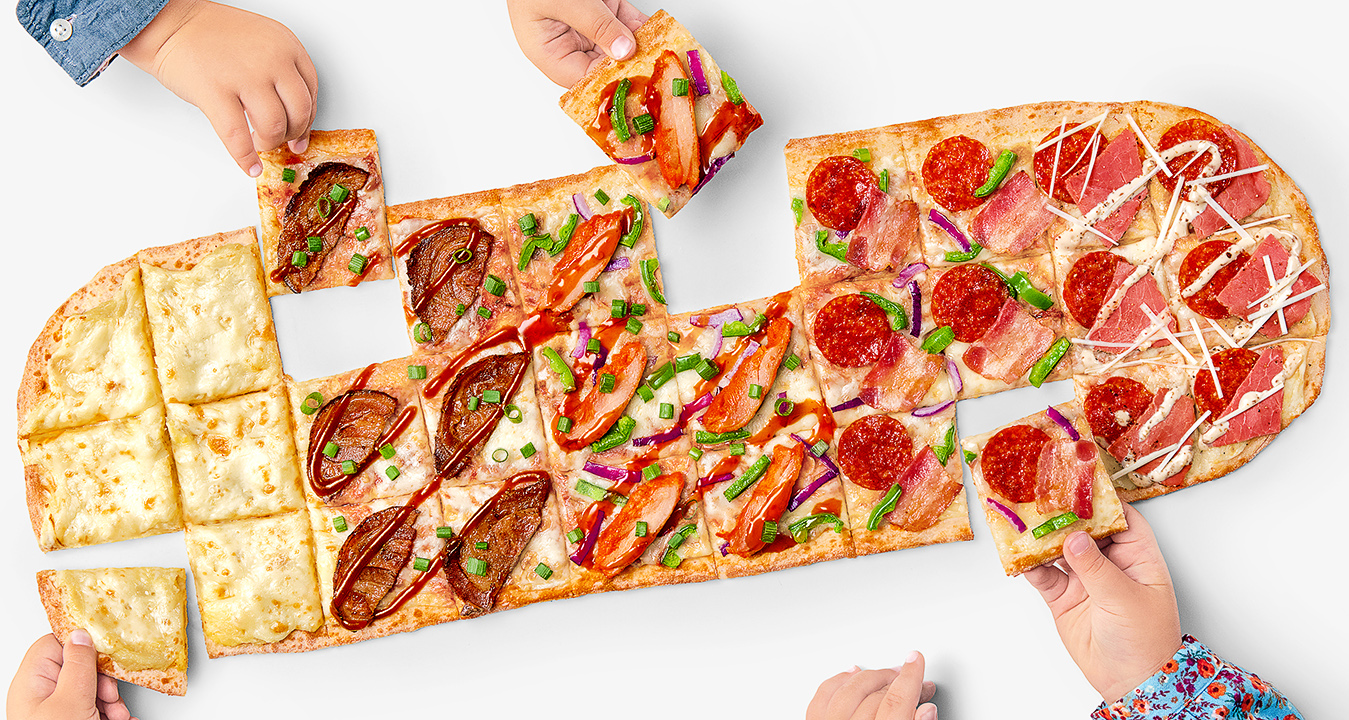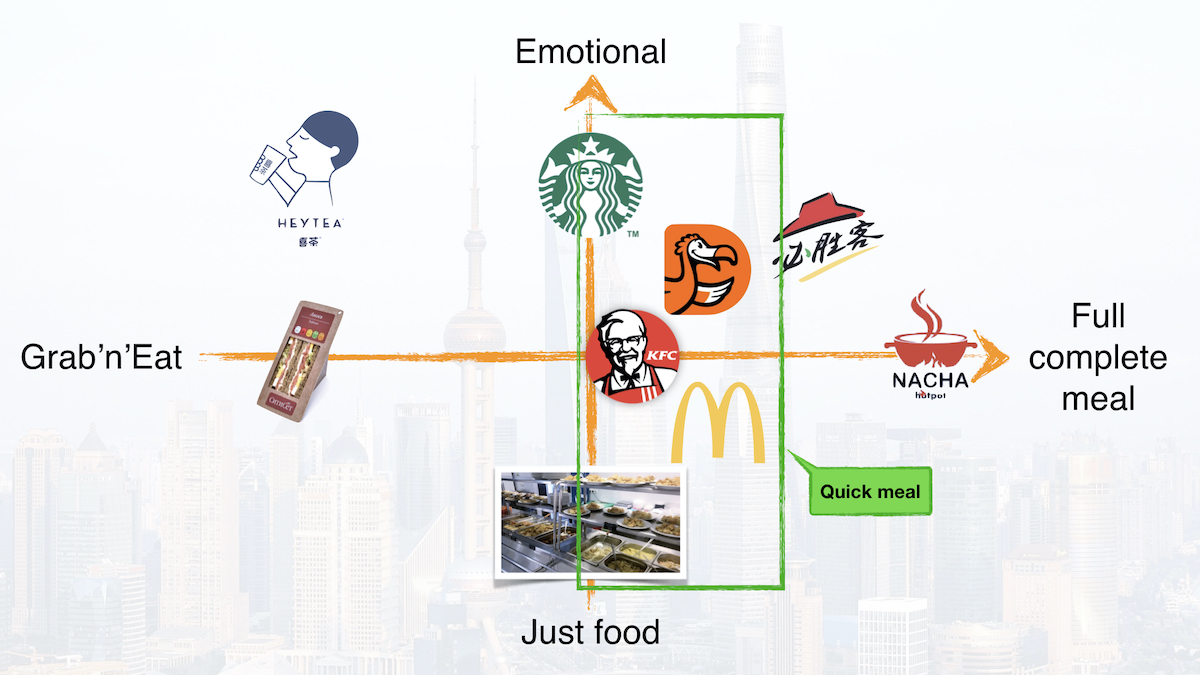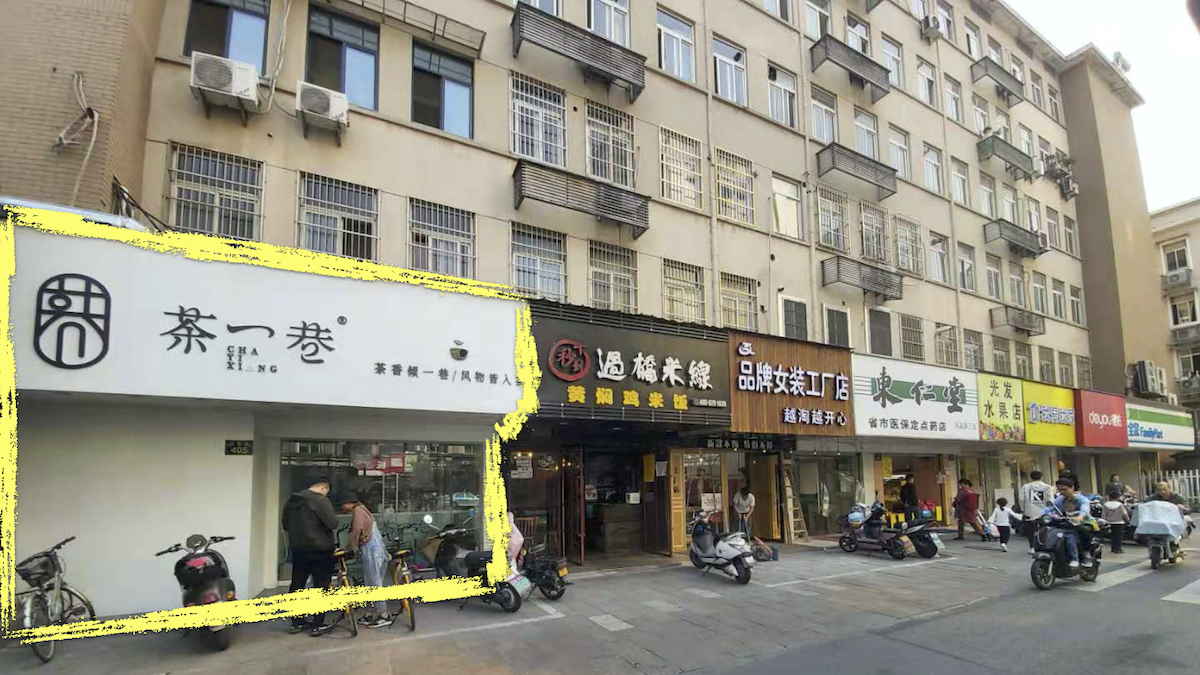
Second Dodo in Hangzhou: how we are building a genuine Chinese pizza shop
20 November 2019
In the spring of 2019, we opened our pilot Dodo Pizza in Hangzhou, China. Our goal is to create a brand new pizza shop format that will perfectly fit the Chinese market and in the future can let us scale quickly with franchising. In October, our daily revenue reached ¥10,000 for the first time. We’ve learned a lot this year. Let me share some of our key insights and new plans.
The most important news is that we will launch our second pizza shop in Hangzhou on 13 January 2020. It will be very small, only 20 square meters (including a 7 square meter kitchen). This is going to be a new format for us, and we will develop a new simplified design for it. If this format takes off, it will allow us to rapidly develop our chain. That’s because there is a lot of small spaces like this in China, and renovations will be fast and cheap. We are going to get the pizza shop of our dreams—inexpensive, quick to launch, and profitable, thanks to small investments and modest rent fees. But before that, of course, we have to work out the perfect format for such a pizza shop—firstly, by improving our menu.
When we opened our first pizza shop in China, we realized that we weren’t immersed in the local market enough and didn’t have enough understanding of the way Chinese people saw eating out. That’s why these past months we’ve been conducting a large consumer study of the market as well as in-depth interviews and made a quantitative survey with an online panel.
In the qualitative survey, we were working with four Chinese guys who kept diaries for us for two weeks. They recorded their impressions of restaurants and cafes they visited. We also asked them to interview their friends, colleagues, and relatives. After that, together we went to a lot of the restaurants they liked, and they shared with us their thoughts.
We analyzed all the received data and decided to classify the Chinese market in two categories. The first one is functionality, everything from grab&eat, where you get, say, an already prepared sandwich and eat it on the go, to a full dinner at a restaurant where it’s OK to take your partner. The second category is emotions. You experience less of them in a simple canteen rather than, for example, in Starbucks.
We put all the brands that we were interested in on a grid that had functionality as its “x” axis, and the “y” axis was emotions. And we saw that our area is more functional—that’s a quick meal where you can have a quick, not expensive, and relatively robust lunch or dinner. That’s our place as a brand.

Why there? Dodo is geared toward large-scale production—not least because we have our own Dodo IS digital platform that helps make products quickly and up to standard. We also understand that emotions-wise, we can’t yet propel our brand to the level of Starbucks. But for the Chinese, pizza is a special product. Because of that, in terms of emotions, we should be higher than KFC. This means that our concept that we now want to develop is a slightly emotive quick meal.
What challenges await this format in China? First of all, it became clear that for Chinese people pizza isn’t really a quick meal. We asked about two hundred people in the online panel what a quick meal meant to them. Half named western brands like KFC or McDonalds. Some named Chinese chains. Only 4% chose pizza.
We began researching the reasons behind pizza not fitting into the definition of a quick meal. We’ve identified five problems.
- Pizza shops are usually located away from offices or colleges (it’s unlikely you’ll get there in five minutes). A visit to a traditional pizzeria is a pre-planned affair, not a spur-of-the-moment decision.
- Pizza is perceived as a product that is supposed to take a long time to make. That alone puts a barrier on pizza’s perception as a quick meal.
- Pizza is too fat and large for a single person. It seems that this stereotype is the result of certain western brands’ work.
- Pizza is expensive. This is true. You can eat your fill with ¥30 in a Chinese McDonalds. And Dodo is probably the only pizza shop in China where you can get a ¥30 pizza.
- Finally, pizza isn’t enough for a full lunch or dinner. It needs some accompanying products to qualify for a quick meal.
But there is good news, too. Pizza, or at least our pizza, is perceived as a healthy product. People value the fact that we have fresh ingredients and excellent dough.
What conclusions have we arrived to?
- We have to focus our marketing on the lightness and freshness of our pizza.
- We have to pick locations in the vicinity of offices and schools.
- We have to teach people that our pizza is done quickly, it’s inexpensive and small enough so that you can eat the whole thing by yourself, without overpaying.
- We have to expand our menu, of course, because up until this moment we’ve only been working with pizzas.
Now the most interesting part begins—working with the product. And it already follows all directions outlined above.
Now we show our dough and say it’s light, not greasy, and tasty. We try to show the diversity of ingredients in our mockups, show more fresh ingredients, emphasize our combos and irregular sizes to create a sense of variety. This way we stress the fact that you can discover a new taste every day.

We are also starting to advertise our speed everywhere. In the dining area, we can prepare an order in five minutes—no pizza shop in China can offer such speeds. And our delivery usually takes no more than 30 minutes, while our competitors take an hour.
The location that we found for the second Hangzhou pizza shop is in a residential area within a hundred meters from business centers. That’s a perfect place for us—people will come to us on their way to work or visit us for lunch during the workday.

We are currently working on looking more accessible for the solo diner. Here we have a cute little project—XS pizzas the size of your palm that fit one person and don’t cost much. We hope this product will become a great reason for a test purchase.
And, naturally, we’re expanding our menu to offer our guests a full dinner. It’s one of our principal tasks right now. We’ve decided to add chicken snacks to the menu. Our research shows that chicken wings are at least twice as popular as pizza or burgers in China.
There’s a challenge here, of course—baking wings is more difficult than pizza, at least for us. Our idea is to employ the same framework that our colleagues in Russia are developing in the experimental pizza shop in Moscow that has a lot of products in the hot&ready format. We are going to be cooking the snacks in advance and store them in a hot storage cabinet—this will let us maintain our speed and, at the same time, a more or less comprehensive menu.
What results will all these changes bring? We’ll definitely talk about that in our future posts.
Every month our subscribers receive the Dodo Pizza financial report with our key metrics and links to all relevant blog updates. Subscribe, so you don’t miss new episodes of our reality show about business in China.
Just scroll to the bottom of the page, add your email and hit enter!👇
